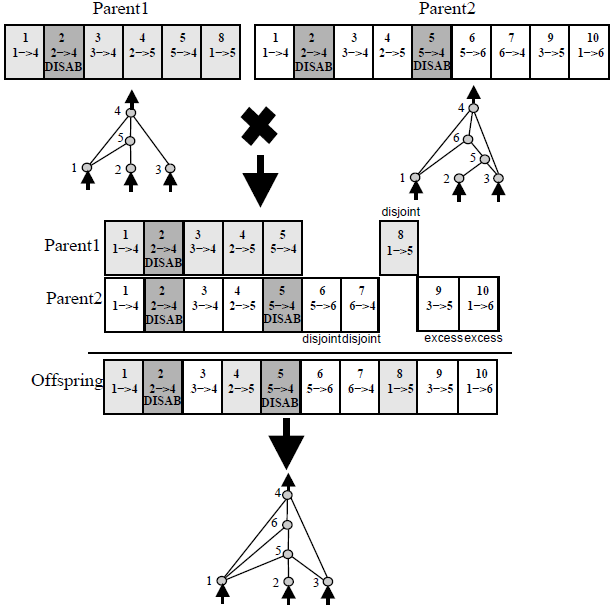I am currently implementing the NEAT algorithm developed by Kenneth Stanley, taking the original paper as a reference.
In the section where the crossover method is described, one thing confuses me a little bit.
So, the above figure is illustrating the crossover method for NEAT. To decide from which parent a gene inherited, the paper says the following:
Matching genes are inherited randomly, whereas disjoint genes (those that do not match in the middle) and excess genes (those that do not match in the end) are inherited from the more fit parent.
For the matching genes (1 - 5) it's easy to understand. You just randomly inherit from either Parent1 or Parent2 (with 50% chance for both). But for the disjoint (6-8) and excess (9-10) genes you cannot inherit from the more fit parent because you only have those genes in either Parent1 or Parent2.
For example:
Parent1's fitness is higher than Parent2's. The disjoint gene 6 only exists in Parent2 (of course, because disjoint and excess genes only occur in one parent) So, you cannot decide to inherit this gene from the more fit parent. Same goes for all other disjoint and excess genes. You can only inherit those from the parent they exist in.
So my question is: Do you maybe inherit all matching genes from the more fit parent and just take over the disjoint and excess genes? Or do i missunderstand something here?
Thanks in advance.

